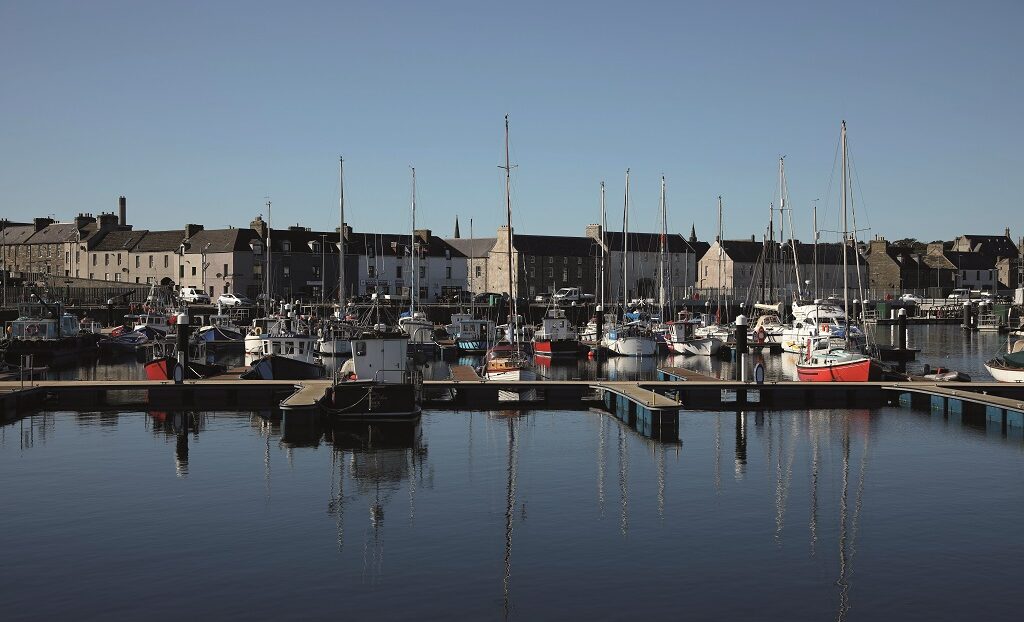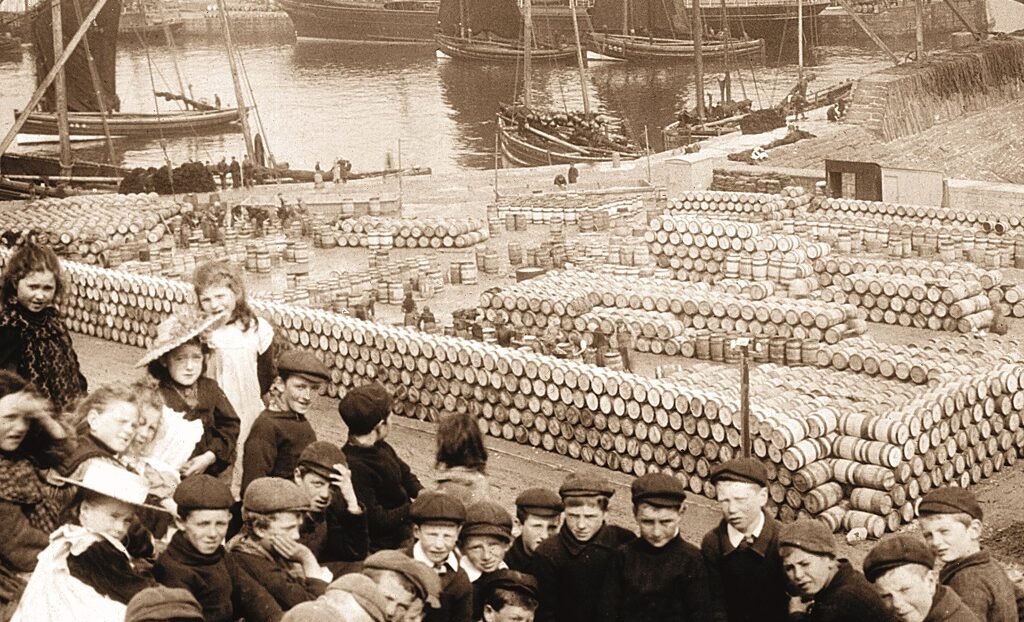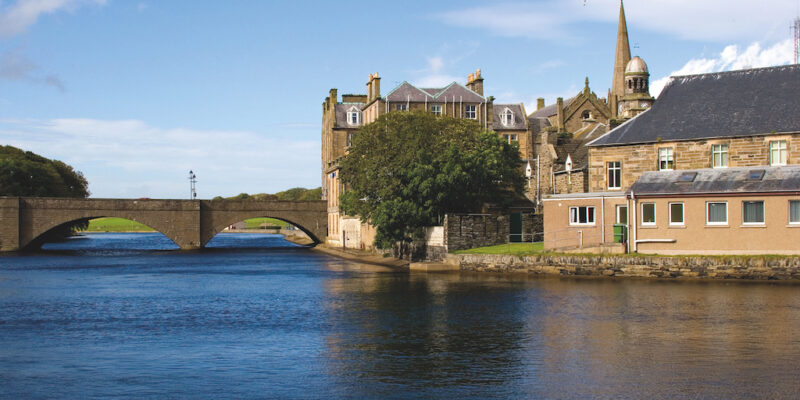We tell the little-known story of prohibition in the Caithness fishing port of Wick between 1922 and 1947
MORE FROM SCOTLAND MAGAZINE
Mention the word ‘prohibition’ to most people, and it conjures up images of New York speakeasies, mobster Al Capone versus the Untouchables, and press photographs of revenue officers taking axes to seized casks of illegal alcohol.
But prohibition was far from being just a US phenomenon. In the unlikely setting of the Caithness fishing port of Wick, in the far north of Scotland, another much less well-known period of prohibition took place. Not only that, but it lasted for 12 years longer than US Prohibition, which was in place from 1920 to 1933.
As the late Caithness historian Iain Sutherland wrote in Vote No Licence, “For a quarter of a century, between 28 May 1922 and 28 May 1947, there were no public houses or licensed grocers in Wick open to the public for the sale of alcohol. They had been closed as the result of an election which had been held on 10 December 1920, under the terms of the Temperance (Scotland) Act of 1913.”

As Britain had become increasingly industrialised during the 19th century, the problem of drunkenness and its effects on families was magnified by swelling urban populations, with the British Association for the Promotion of Temperance being formed in 1835. The Association promoted abstinence from spirits and though it did not object to the consumption of beer or wine, soon more radical ideas of total abstinence from alcohol gained traction, and it has been estimated that by 1900, 10 percent of the adult population of the United Kingdom were teetotallers.
Wick was one of the world’s leading herring ports in the 19th and early 20th centuries and became associated with the drunkenness and violence rife among some of the fishermen and seasonal workers who had followed the herring fishing fleet through the summer.
During the 1840s, there was a combined 41 licensed premises in Wick and the adjacent fishing centre of Pulteneytown. It has been estimated that in excess of 800 gallons of whisky – or some 5,000 bottles – were consumed every week.
It is recorded that more than 1,000 vessels were based in Wick for the 1862 season, meaning that the population of the town had tripled or even quadrupled, so it was hardly surprising that strong drink was taken and fights often occurred during this time.
The drunken behaviour drew many local people to support Temperance, and as in the United States, the term ‘Prohibition’ was regularly used to describe the situation in Wick, appearing in the publicity material of both ‘wets’ and ‘drys’, who battled for and against restrictions on alcohol sales in the port.
As we know, the ‘drys’ won the day, and only bona fide travellers could legally purchase alcohol in Wick, and even then only as an accompaniment to a meal.

But, as in the US, there were ways around the ban on drink, with Iain Sutherland writing that “Unfortunately for the prohibitionists the same effect which had been seen in America began to show itself in Wick after a short time. By 1922 doctors in Chicago were prescribing 200,000 gallons of spirit for medicinal purposes a year, and while Wick could not reach that level, it was beginning to discover a variety of ailments which required treatment by alcohol.”
Another consequence that mirrored the situation in the US was the production of illicit alcohol, and at least two stills are known to have been working in Wick. According to Sutherland, “One, at Hill of Newton, was operated by Willag Thomson in conjunction with his uncle and cousin, and the trio even grew their own barley for the whisky they produced. The customers were uncritical of quality, although this varied considerably according to the brew and vintage, which was usually measured in days or weeks.”
Illegal drinking dens, or shebeens, sprang up around the town, including one daringly sited in a respectable restaurant, where a silver teapot was used to dispense whisky to knowing customers.
By the time prohibition was repealed in Wick, another world war had been fought, and the herring fishing industry had virtually been wiped out by over-fishing. Consequently, the problems caused by excessive drinking were no worse than anywhere else in Scotland.

Four years after the end of prohibition, Wick’s Pulteney distillery reopened for business, having been established in 1826 by James Henderson and closed in 1930. Its Old Pulteney single malt is now exported all over the world. Caithness gained a second distillery in 2012 when Wolfburn was established at Thurso, close to the site of the original Wolfburn distillery, that operated between 1821 and the 1850s. Currently, plans are in place to develop a third whisky distillery at John O’Groats, while Rock Rose Gin distillery at Dunnet, near Thurso, is also branching out into whisky production.
American economist Milton Friedman declared that “Making prohibition work is like making water run uphill; it’s against nature,” a fact that was discovered not only in great, fashionable cities like New York and Chicago, but also in this less than glamorous Caithness community.
Iain Sutherland MBE, founding father of the Wick Society, whose work informed much of this article, died in May 2020. You can find out more about the history of Wick at www.wickheritage.org
MORE FROM SCOTLAND MAGAZINE

SCOTLAND MAGAZINE
Published six times a year, every issue of Scotland showcases its stunning landscapes and natural beauty, and delves deep into Scottish history. From mysterious clans and famous Scots (both past and present), to the hidden histories of the country’s greatest castles and houses, Scotland‘s pages brim with the soul and secrets of the country.
Scotland magazine captures the spirit of this wild and wonderful nation, explores its history and heritage and recommends great places to visit, so you feel at home here, wherever you are in the world.